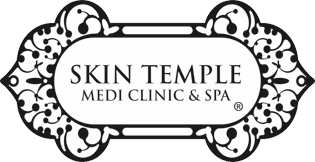Scars form as the result of injury or inflammation in the dermal layer of the skin. When damage to this layer of skin occurs, the body produces new collagen fibers for the purpose of mending the injury. When the wound is finished healing, a scar is formed. Scars can come in many shapes, sizes and colours, all of which can cause the scarred area to contrast with the adjacent skin becoming more visible.
Using the latest, state of the art lasers, Dr Teska can improve even the most stubborn of scars such as:
- Surgical Scarring, including Caesarian Scars (several treatments are necessary)
- Keloid and Hypertrophic scarring, from surgical or traumatic injury (several treatments are necessary)
- Acne scars (several treatment sessions are necessary)
- Chicken Pox scars (this may need to be combined with some dermal filler if significant indentation needs to be lifted)
- Burn and Trauma scars- including contractures (a series of treatments are necessary)
The Laser Genesis and Ultrapulse Fractionated CO2 lasers treat the general textural changes that are associated with damaged skin. The middle dermal layer is targeted by the laser, with only a feeling of warmth, which stimulates collagen production and reorganization. Over the course of treatment, the appearance of scars improves and the scar blends with the surrounding skin.
Treatment for scarring, using the Laser Genesis System, requires no down time and is pain free. Multiple treatments are usually necessary and done every 3-4 weeks.
Stretch marks are another condition, regularly treated at Skin Temple. There is no perfect cure for stretchmarks, and why some people develop them during adolescence or pregnancy, whilst others don’t, is a cause of frustration. Sudden weight gain is a factor, so maintaining a constant body weight is important but may not be advisable or possible during times of necessary growth..like puberty and pregnancy. Certain medications (notably prednisolone or cortisone based medication) may also dramatically worsen stretchmarks.
Your diet is very important, as healthy strong collagen tissue requires significant amounts of dietary vitamin C, and zinc. Topical vitamin A and E have also been used with moderate results.
Laser treatments may only improve stretchmarks by 50%. The easiest stretch marks to treat are those that are still red or purple in colour.
Using the Medilite C6 laser system (for red stretchmarks) or Ultrapulse fractionated CO2 systems (for white stretchmarks), Dr Teska has successfully reduced the size and colouring of areas containing stretch marks. It is a well tolerated procedure and there is minimal downtime, though some blotchy red discolouration may take up to 3 weeks to resolve. White stretchmarks will not respond as well as red stretch marks, and all patients may require a number of sessions (3-10) for best results.
The cost of stretch mark treatment with laser will vary on the type of laser used, as well as the extent of the stretch marks. It is not a Medicare rebatable treatment procedure. Treatments with the Medlite C6 are from $220 per session (up to 10 sessions required), Ultrapulse treatments cost from $880 per session (3-6 sessions required).
